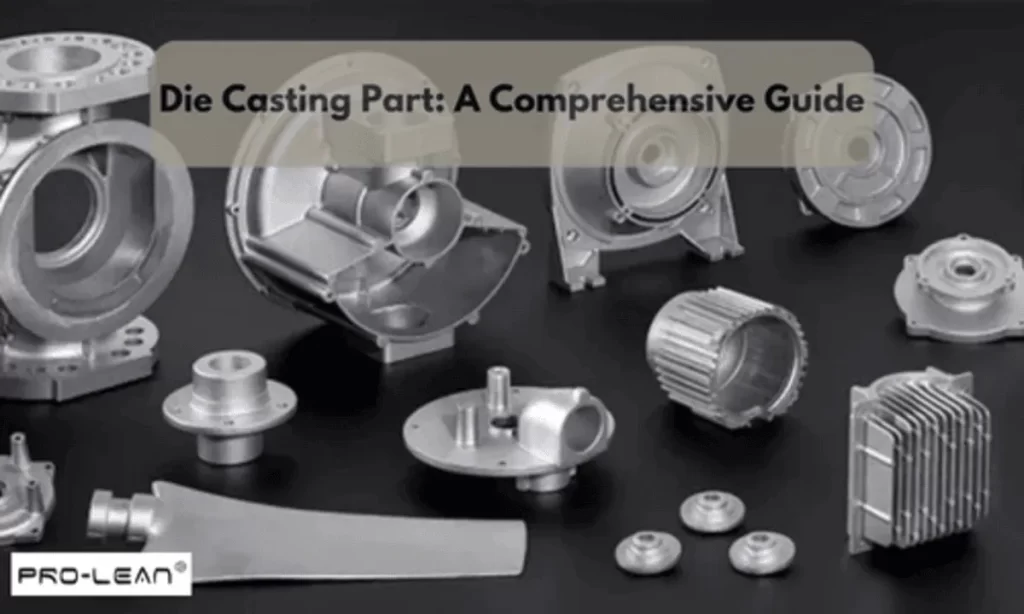
Die Casting Parts
Die casting is one of the most efficient methods for producing high-volume, high-precision metal parts. Industries worldwide rely on this process for its accuracy, speed, and strength. But at the heart of die casting lies the die itself, which shapes, cools, and forms each part.
If you’re looking for scalable metal part production, understanding the structure and function of a die-casting die is key to optimizing your design and saving costs. Knowing how dies are built and what makes them efficient can give you a competitive edge, especially when dealing with tight tolerances, complex geometries, or short lead times.
At ProleanTech, we specialize in advanced die-casting solutions designed for precision, durability, and efficiency. With years of experience and cutting-edge technology, we help clients across industries bring their designs to life. Our expertise ensures quality, affordability, and customization at every stage.
This article explores die-casting dies, their applications, advantages, and comparative merits in manufacturing. Let’s get into the topic.
In this blog, we’ll talk about the structure of die-casting dies, the types of parts made with this process, its benefits, and how it compares to other casting methods. Let’s get into the topic.
Die Casting Meaning “As the name indicates, Die-casting is a metal-casting process in which molten metal is forced under high pressure into a mold (die) to create a specific shape. The metal is then cooled and ejected.”
Common Die Casting Part
Die casting is used for various industries and parts such as automotive, aerospace, and electronics. Some standard die-casting components are:
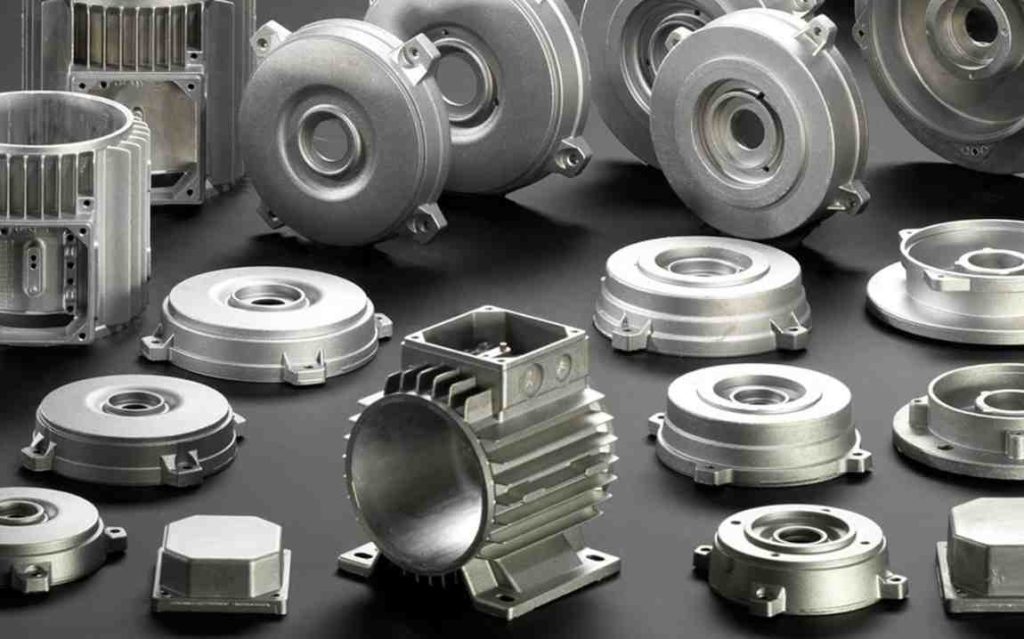
Precision Aluminum Die Cast Products
Automobile Parts – Engine housings, transmission cases, brackets, and covers.
Electronics – Heat sinks, connectors, and enclosures.
Industrial Equipment – Valves, pumps, and gears.
Consumer Goods – Handles, locks, and hardware parts.
Known for strength, durability, and cost-effectiveness, aluminium die-casting parts are popular amongst die-casting products. Die casting allows the production of very intricate designs with excellent dimensional accuracy so that little or no additional machining is required. Also, die casting ensures high repeatability, making it the right process for mass production across industries.
Try Prolean Now!
Cost of Die Casting?
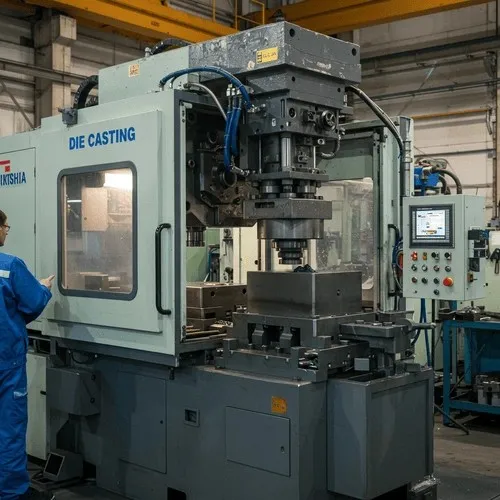
Die Casting Machine
One common question asked by manufacturers about die casting is its cost. You may have heard, “Is die casting expensive?” or “Is it worth investing in?”
Well, there is not just one factor; the cost of manufacturing die casting depends on many things, including design complexity, choice of material, and production volume.
The cost analysis of Die casting processes shows that it has high initial tooling costs but costs little per individual part in longer runs. For companies making thousands or millions of identical parts, die casting would be a much cheaper process than others.
But if you ask, “Is die casting cheaper than CNC?” The answer is NO. The die-casting process is more cost-effective for mass production, while CNC is more economical for smaller custom batches.
Most Popular Casting Method
Out of various kinds of metal casting techniques, die casting is still the most common method because of its accuracy and efficiency. A few of the leading casting types are:
| Casting Method | Advantages | Best Use Cases |
| Die Casting | High precision, smooth surface, fast production | Mass production of small to medium-sized metal parts |
| Sand Casting | Low-cost tooling, flexible design options | Large metal parts, low-volume production |
| Investment Casting | High accuracy, complex shapes | Aerospace, medical, and jewelry parts |
| Permanent Mold Casting | Good surface finish, reusable molds | Automotive and industrial applications |
If you are choosing between die casting and sand casting, you can choose the one easily. Die casting is opted for mass production, while sand casting is selected in cases concerning large and complex parts.
Advantages of Zinc Die Casting
Zinc has been among the die-casting materials most widely used. The advantages of zinc die casting include:
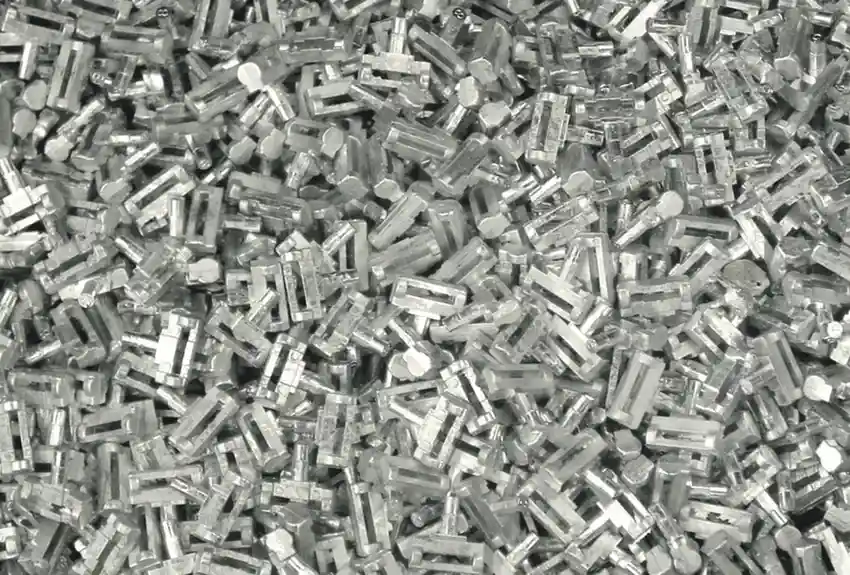
High-Volume Zinc Die Cast Parts
- Exceptional strength and durability
- Excellent corrosion resistance
- High precision with fine details
- Cost-effective for large production runs
- Easy plating and finishing options
Owing to these virtues, zinc die-casting uses are in automotive, electrical and industrial sectors.
What Kind of Steel is used for Die Casting?
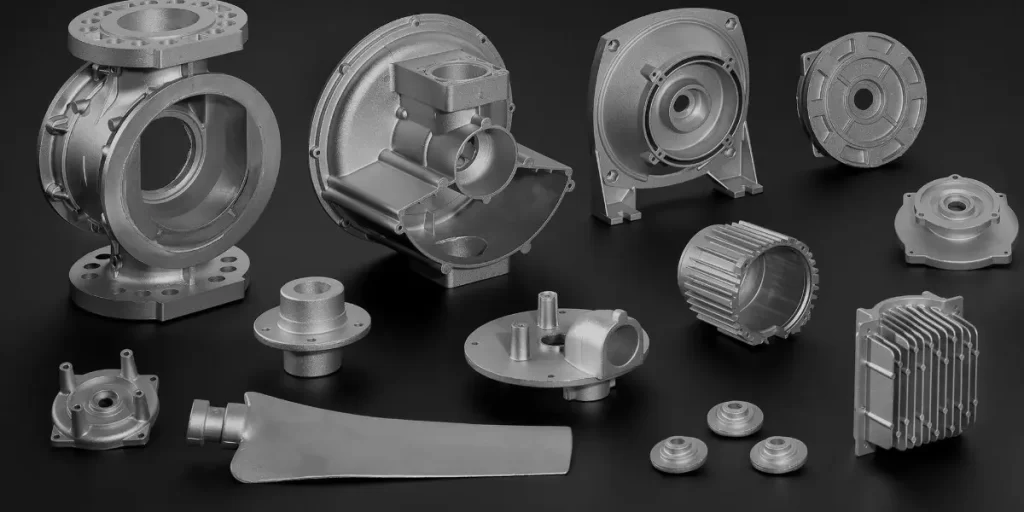
Die Cast Aluminum Steel Parts
Since die-casting molds withstand extreme temperature and pressure conditions, they are built using high-grade tool steel. The following steel types are mainly used as mold material:
- H13 Steel – Excellent toughness, thermal fatigue resistance
- SKD61 Steel – High wear resistance, good heat stability
- P20 Steel – Good machinability, used for low-volume production
The choice of materials guarantees the lifespan of die-casting molds, making them excellent for producing high-quality die-casting parts.
Magnesium, besides aluminum and zinc, is becoming very popular in die casting because it is lightweight. Choose magnesium casting since magnesium alloys are:
- Lightweight – Up to 30% lighter than aluminum
- Strong and durable – High strength-to-weight ratio
- Excellent heat dissipation – Preferred for electronics and automotive applications
Magnesium casting is the correct answer for industries that demand weight reductions without sacrificing strength.
Try Prolean Now!
Everything About Die Casting Manufacturing
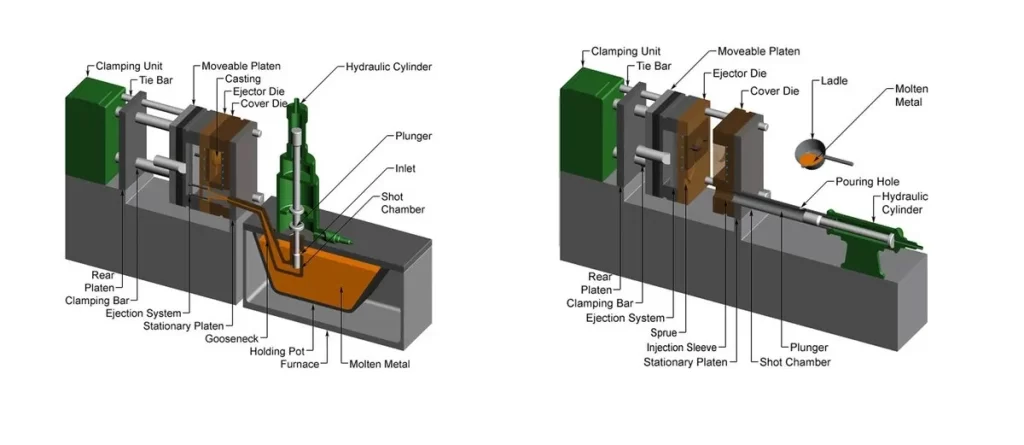
Cold Chamber vs. Hot Chamber Die Casting Machines
Die casting remains among the most efficient metal manufacturing processes. Manufacturers can trust its precision and efficiency in producing quality components, whether zinc or aluminum die-casting parts. It assures durability, complicated designs, and cost-efficient production, making it the perfect choice for automotive, aerospace, and electronics applications.
ProleanTech provides high-quality custom die-casting services. It offers die-casting components, die assembly, and metal part assembly, all of which can be customized according to your production needs. Modern technology, expert engineering, and stringent quality control deliver the most potent, long-lasting components for reliable, precision-built parts.
For more, read this guide on Everything About Die Casting Manufacturing.
Why Choose ProleanTech for Die Casting?
When you need custom die-casting services, the first step is to find the proper manufacturer. You need to choose one that is high-quality, efficient, and cost-effective.
ProleanTech is known for high-precision die-casting components, die assembly, and metal parts assembly specific to your demands. So, what are you waiting for? Visit our quote page-Upload your files here, and get started.
What Sets ProleanTech Apart?
ProleanTech is about putting quality to work and delivering efficient and reliable die casting parts. They are aimed to improve the performance and life of your products.
Advanced Technology – We use die-casting machines to produce intricate and durable components.
Expert Engineering Support – Our highly trained engineers help optimize designs to increase efficiency and performance.
Strict Quality Control – All elements are tested thoroughly to meet the industry standards.
Cost-Effective Solutions—We offer affordable die-casting services through which large-scale production can be easily made on a budget.
Versatile Material Options – Zinc, Aluminum, or even Magnesium die-casting parts are all available under our roof.
Ready to Get Started? Contact us now to request a free quote and experience top-tier die-casting solutions customized for your business!
Takeaway
Die casting is a precise, efficient way to produce substantial, high-quality parts. It is suitable for mass production because it is durable and economical in the automotive, aerospace, and electronics industries. The die-casting process can quickly produce more complex shapes that require smooth finishes and tolerances; thus, it is an answer for many industries.
For the best results, select a reliable manufacturer. ProleanTech can provide expert advice, advanced technology, and cost-effective custom die-casting services. Work with us to get reliable, high-quality parts that will enhance the performance of your products!
Trust ProleanTech as your Custom Parts Manufacturer! Visit us and get custom die-casting services today!
FAQs
Q1. How long does the casting process take?
It is a very rapid process. Each cycle lasts from a few seconds to several minutes, depending on the part’s size, weight, and complexity. This is the most adaptable production technology with precision and consistency for high-volume mass production.
Q2. What parts are casted?
Components manufactured by die casting are used in a wide variety of industries. Some parts are engine housings, transmission cases, heat sinks, brackets, enclosures, and gears. Die casting is always the first choice for intricate, high-strength, and durable die-cast parts with perfect dimensional accuracy.
Q3. What Are the Main Types of Casting?
The main types of casting include:
- Die Casting – High precision, smooth surface, and best for mass production.
- Sand Casting – Low-cost tooling for large or complex parts.
- Investment Casting – High accuracy, ideal for aerospace and medical applications.
- Permanent Mold Casting – Reusable molds, excellent for automotive and industrial uses.
- Centrifugal Casting – Used for cylindrical parts like pipes and rings.
Each casting method has distinct advantages depending on the application, material, and production scale.
Q4. Is die-casting cheaper than CNC?
Die-casting processes are generally more cost-effective than CNC machining for large-scale production.
Q5. What are the parts of die-casting die?
All die-casting dies have some principal parts, such as the cover die, ejector die, and slides. The cover die makes the outer appearance, whereas the ejector die helps remove the casting. Slides create internal features, and pins or cores create holes or cavities. All these parts work collaboratively to make very complex castings.
Q6. What are diecast parts?
Diecast parts are made by injecting molten metal into a mold. The process creates exact details with smooth surfaces. Diecast parts are used in industries such as automotive, aerospace, and electronics, where precision and durability are needed.
Q7. What parts are made by die casting?
Die casting can be used to produce many parts, such as engine blocks and gearboxes. Its applications are enormous, from an automobile structure to a cylinder head and a transmission case to an electronic connector. Die-casting decorative items include precise finishes and textures, such as furniture hardware and door handles.

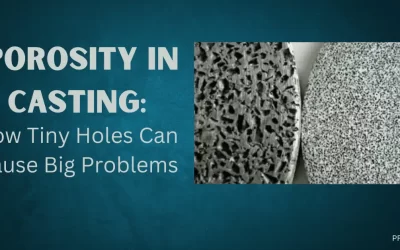
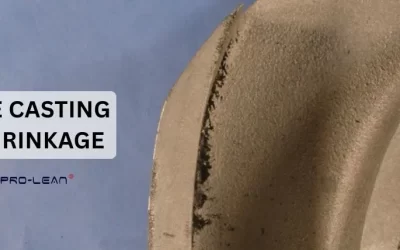
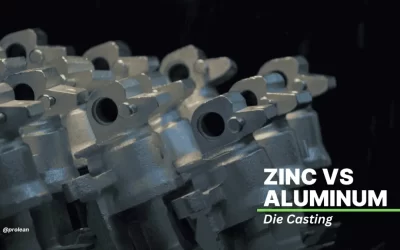
0 Comments